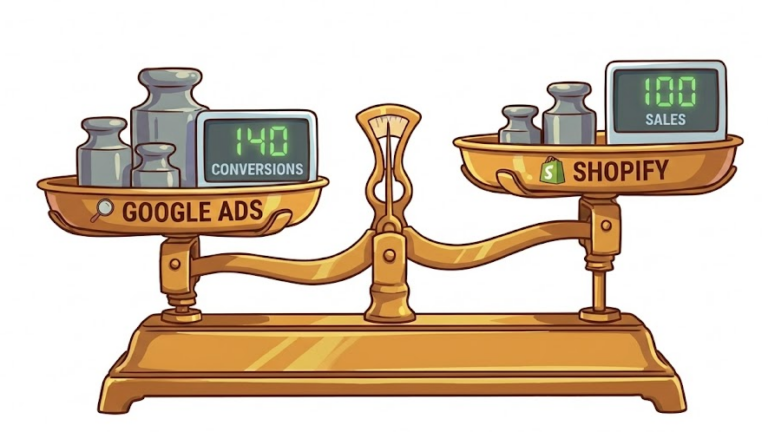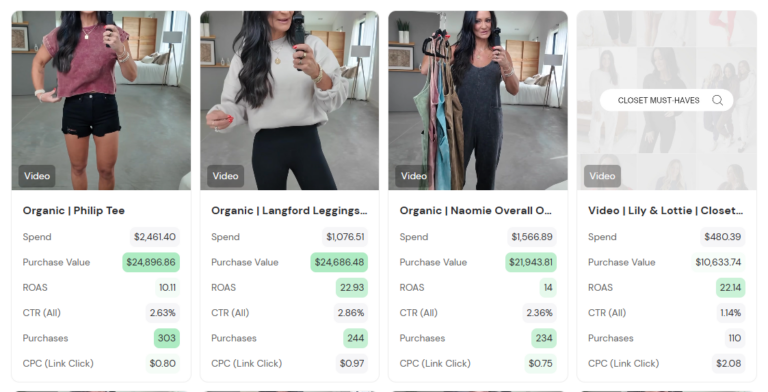Running Google Ads and Microsoft Ads looks easier than ever. You can launch a campaign in minutes. The platforms walk you through setup. Automations are everywhere.
But actually getting results? That’s getting tougher.
You have fewer controls. Less visibility. More automation deciding where your money goes. It feels simple, until the performance drops and you can’t figure out why. And when you don’t have a solid strategy behind what you’re doing, things can go off the rails fast.
We’re literally giving away our Google & Microsoft Ads best practices that we’ve used to scale our brands from less then $10K per month to well over $500K in revenue. The real strategy we use behind the scenes to get results.
Getting Started: Conversion Tracking
Why Conversion Tracking Matters
If your conversion tracking is off, the whole account is broken, even if it “looks” like it’s working. You’ll end up optimizing for garbage, feeding bad data into smart bidding, and wasting your budget without even realizing it. This is the first thing we look at in every audit, and it’s where most issues start. Your conversions are your north star, so if that’s pointing in the wrong direction, everything else follows.
Best Practices
Start here. If this isn’t tight, nothing else will be either.
- Segment by conversion action to avoid double-counting
- In “Goals > Conversions,” check:
- Repeat rate under 1.05x
- Conversion windows match your buying cycle
- Leads = one conversion per form, not every time someone hits “submit”
- Stick to one main conversion action per campaign/account unless you need to train the algo
- Always report on final goals (like purchases or closed leads)
You need clean, consistent signals going in so the platform can do its job. Otherwise, you’re just guessing.
Campaigns
Campaign Structure
Why Clean Structure Wins
Sloppy structure = sloppy results. If campaigns are overlapping, targeting the same stuff, or jamming in too many goals, performance tanks. The platforms aren’t going to fix it for you, they’ll just optimize toward the easiest win, not the right one. A clean structure gives you visibility, control, and the ability to scale without chaos.
Best Practices
Keep it simple and built to grow. You’re not proving how smart you are, you’re making money.
- Don’t let Performance Max and Standard Shopping compete with each other
- Keep brand vs non-brand completely separate
- Clean up ad extensions, add, remove, or refresh as needed
- Make sure you’re not just bidding on brand or just on non-brand
- Check your Google Merchant Center:
- Are you a Top Quality Store?
- Any feed errors or disapprovals?
- Are you a Top Quality Store?
If your structure’s a mess, your data is too. Fix this before you even think about scaling.
Branded Campaigns
Why You Still Need Brand Protection
People still search your name before they buy. If you’re not showing up with a paid ad, someone else will. Organic won’t stop competitors from stealing that traffic, and branded clicks are usually cheap and high-intent. This is the easiest performance win you can get.
Best Practices
Keep it tight. This isn’t where you experiment, it’s where you make easy money.
Branded Text:
- Use exact match only
- Structure into themed ad groups (e.g. “reviews,” “official site”)
- Start with manual CPC
- Limit to 5 – 10 ad groups, max 2 – 3 campaigns
Branded Shopping:
- Run a branded Performance Max to start
- Break out campaigns by product category
- Fill asset groups with matching headlines, videos, and images
- Check auction insights (L90D) to avoid overspending if there’s low competition
If it’s not structured, you’re either overspending or losing conversions. Brand should be the most boring part of your account, and the most profitable.
Non-Branded Campaigns
Non-Brand Drives Scale
You don’t scale a business on brand alone. Non-brand is where you find new customers and drive volume. But it’s also where most people blow their budget chasing the wrong traffic. If your structure’s sloppy, or your targeting’s too broad, it’s game over.
Via WordStream
Non-Brand Text Best Practices
This is the part of the account you need to actually manage. It’s not set-it-and-forget-it.
- Max 10 ad groups, ideally closer to 5
- Max 50 keywords, ideally under 25
- Use phrase match only (Broad Match + tROAS being tested with strong early results)
- Start with Max Conversions or Manual CPC. Mature accounts can use Target CPA
- Turn off search partners and display network
- Set targeting to Presence only and English only
- Exclude branded terms with negative keyword lists
- Use tight themes for each ad group
- Align ads + landing pages for better Quality Scores
Your non-brand campaigns should feel like a sniper rifle, not a shotgun. Fewer keywords, better targeting, higher returns.
Non-Brand Performance Max
You Need to Control Performance Max
Via AgencyAnalytics
Left alone, Performance Max will chase the easiest clicks. Usually branded, usually remarketing, and usually not what you want. It can scale, and we use it all the time, but it needs guardrails. You’re not letting Google do the work; you’re giving it the inputs to work with.
Best Practices
Control every lever. Don’t let the platform decide how to spend your money.
- Keep campaigns consolidated, don’t break them out too soon
- Add negative brand keywords to all Performance Max campaigns
- Add brand list exclusions to protect spend
- Turn off auto-generated text, video, and landing pages
- Use Presence only and English only targeting
- Structure asset groups by product category or line:
- Tailor search themes, creatives, and audiences
- Use SEMrush to build keyword lists
- Build audiences from:
- Tailor search themes, creatives, and audiences
- Only break into new campaigns if:
- An asset group gets 30+ conversions
- Lower-performing groups are holding back performance
- An asset group gets 30+ conversions
Performance Max isn’t “smart” on its own. It’s only as good as the inputs you feed it.
Feed Optimization
Your Feed Is Everything
If your feed sucks, your Shopping and Performance Max results will suck too. Doesn’t matter how good your campaign setup is, Google still needs to match your products to real search terms. And if your data doesn’t give the algorithm what it needs, you’re out.
Your feed is your targeting. They’re what tells Google who should see your product, and why they should care.
More than ever, people are turning to Google Shopping to find what they want. You’re not showing up alone. You’re stacked next to dozens of competitors in a scrollable list, and users will only stop on what grabs their attention.
If your feed isn’t optimized, or worse, if it looks messy, generic, or incomplete, your product isn’t even in the running. You’re losing clicks. You’re losing conversions. And you’re handing sales to the brands that actually built a strong feed.
This isn’t optional. It’s how you win.
Best Practices
No auto-feeds. Build it right!
- Don’t rely on auto-uploads or APIs, build a clean feed
- Fill every field possible in your Google and BING feeds
- Use platform-specific feeds where needed
- Optimize:
- Titles
- Descriptions
- Product Categories (use Google’s taxonomy)
- Product Types (be specific, e.g. “> Trail Running Shoes”)
- Titles
- Add multiple images, especially lifestyle
- Use AI Product Highlights for your top 100+ products (or all, if fewer)
This is a sales asset, not just a data file. Treat it like one.
Funnel Allocation
Via EYClick
Spend Allocation Makes or Breaks Scale
Most people dump 80% of spend into bottom-of-funnel because it looks good in the short term. But then you stall out. You can’t scale if you’re only targeting people ready to buy right now. You’ve got to build the whole pipeline.
Best Practices
Stop spending all your money on what’s easy. Start spending where growth actually happens.
- Don’t overspend on the bottom of the funnel (branded, remarketing)
- BOF should be >50% of total spend
- Focus on Middle of Funnel: Non-Brand Search, Performance Max, Demand Gen
- Scale to Top-of-Funnel (YouTube, Display) only once MOF is maxed out
If your funnel is lopsided, your growth will be too. Build it out properly and spend accordingly.
It’s the exact playbook we use every single day to grow accounts, whether we’re fixing something broken or scaling something that’s already working.
You don’t need hacks. You need structure. A real strategy. Clean data and smart decisions.
If your account isn’t performing, or you’re not sure if it’s set up right, let’s take a look. Reach out and we’ll walk you through what’s working, what’s not, and how to get it moving in the right direction.






no replies